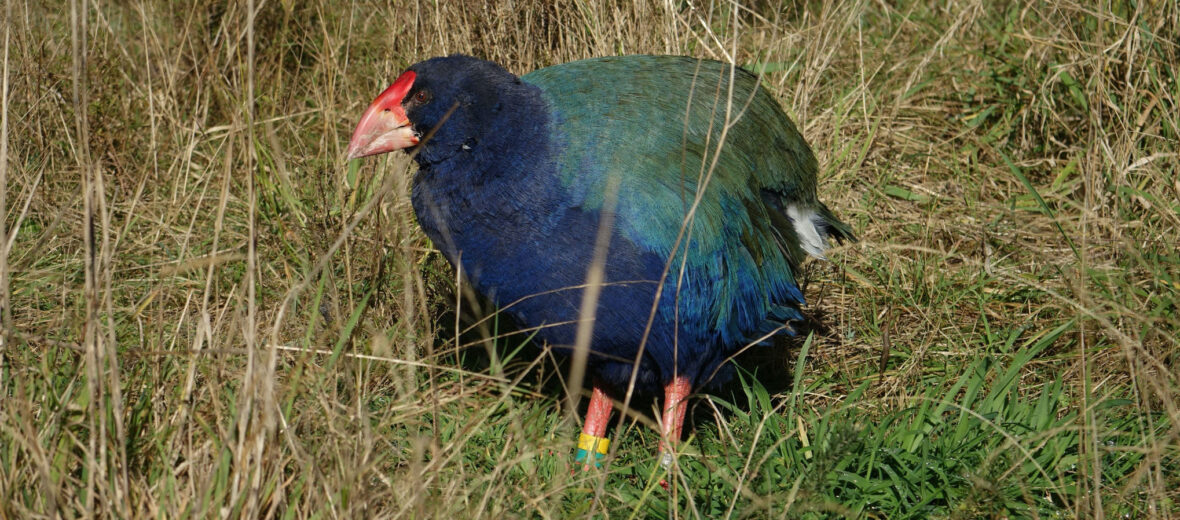
The south island takahē, aka Takahē, is a flightless bird that can only be found in New Zealand. The bulk of their population has been translocated to Kapiti, Mana, Maud, Motutapu, and Tiritiri Matangi. This was necessary due to their homeland swamps being converted into farmland. These birds face the threats of hunting; trapping; invasive species, and with them competition for food, disease, & predation; and climate change, which causes droughts and flooding. The IUCN lists these birds as Endangered. But their numbers are slowly increasing.
First the Stats…
Scientific name: Porphyrio hochstetteri
Weight: Up to 9.3 lbs.
Length: Up to 25 inches
Wingspan; Up to 16 inches
Lifespan: Up to 22 years
Now on to the Facts!
1.) These birds are flightless, but they do possess wings that are often used to aid in climbing up slopes.
2.) They are the largest living member of the rail family.
3.) Takahē are known as a swamp hen, due to their close relationship with swamplands.
4.) South island takahē are sedentary creatures and tend to stay in their grassland habitat until the arrival of the winter snow when they descend into the forests or scrubland habitats.
5.) These critters are diurnal (active during the day).
But wait, there’s more on the south island takahē!
6.) Even though these birds are typically social with each other, they do become defensive and even aggressive towards each other during mating season, while guarding their nest.
7.) Takahē are very noisy birds that produce calls like a ‘clowp’ or ‘womph’.
Did you know…?
There were only an estimated 249 wild individuals remaining, as of 2020. But their numbers are increasing… slowly.
8.) The leaves of Chionochloa tussocks, alpine grasses, shoots, and the occasional insects are all on the menu for these herbivores (more specifically graminivorous & folivorous).
9.) Being monogamous (mate for most or all of their life) these critters will stay with their partner for 12 or more years.
10.) Females lay up to 3 eggs in a bulky nest, under shrubs. These eggs hatch in up to 30 days.
But wait, there’s still more on the south island takahē!
11.) Chicks are fed by both parents and fledge in up to 3 months.
12.) Red deer compete with takahē for available food.
13.) Introduced stoats are their primary natural predator.
14.) Due to extensive habitat reduction inbreeding has become a problem, as there are fewer birds in a smaller area. Previously, their population and subsequent blood line was more diverse and spread out.
Now a Short South Island Takahē Video!
Be sure to share & comment below! Also, check out the Critter Science YouTube channel. Videos added regularly!
Want to suggest a critter for me to write about? Let me know here.
Some source material acquired from: Wikipedia & IUCN
Photo credit: iNaturalist



